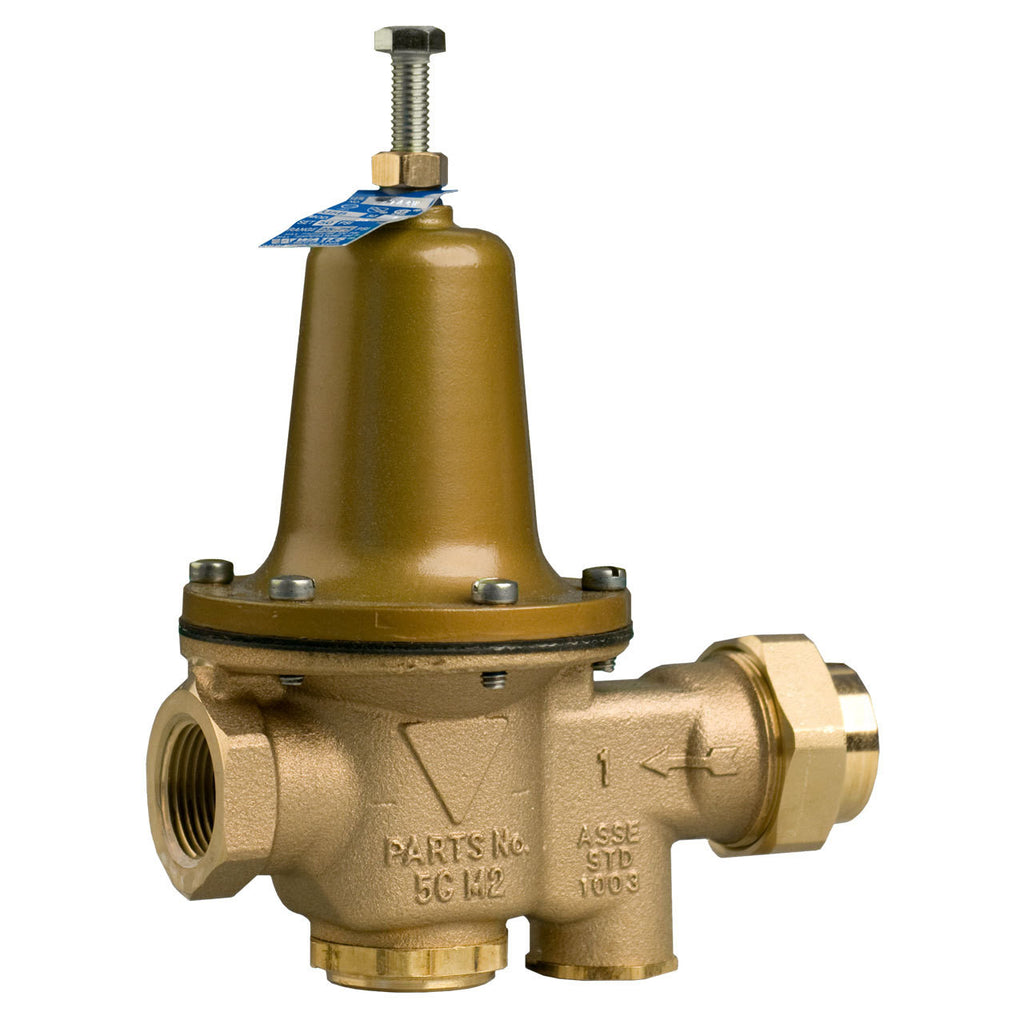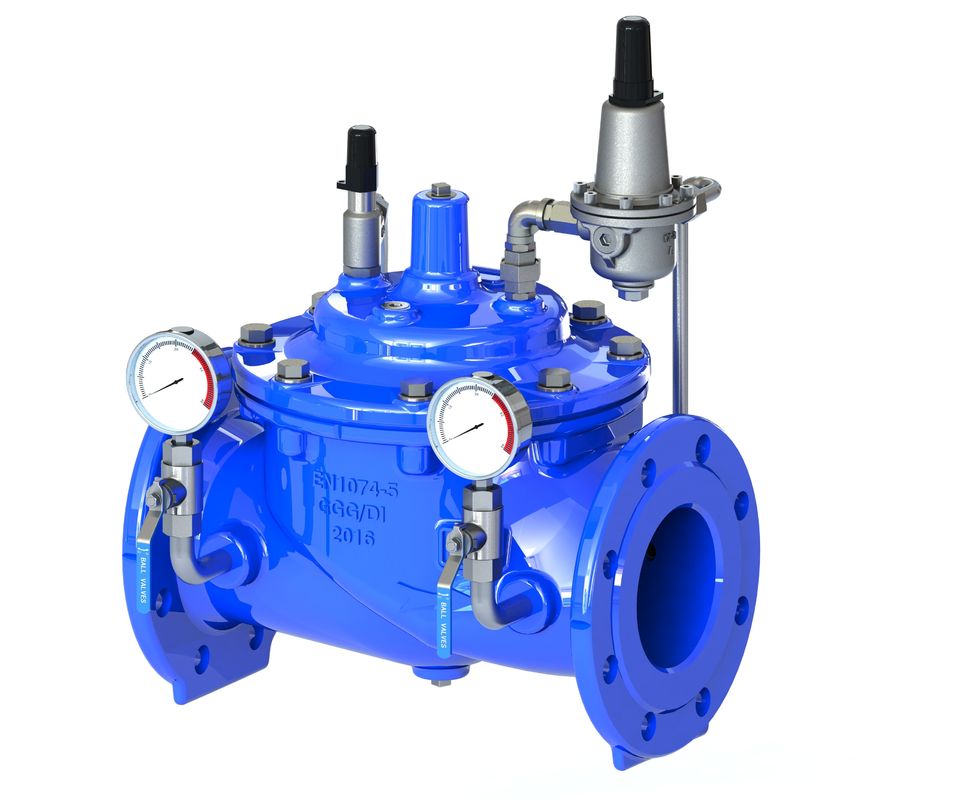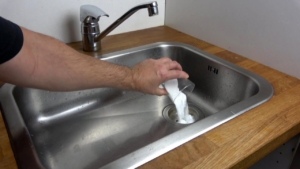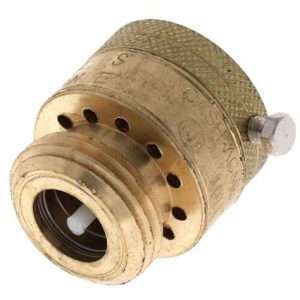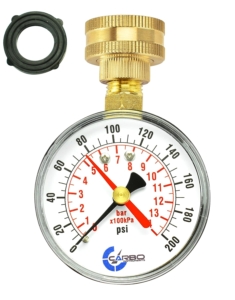All About Water Pressure Regulators: What You Should Know (2023 Guide)
Water pressure regulators are simple devices that help prevent major problems in your water system. Plumbing is critical for for any home and we want to keep these systems operating properly. These regulators help control the pressure of water flowing through the pipes to ensure that it is at a safe and optimal level for both the system and the person using the system. Without a regulator, the water pressure in the system can be too high, causing damage to the pipes and appliances, or too low, leading to poor performance of fixtures and appliances. In this blog, we will discuss everything you need to know about water pressure regulators including how they work, common problems, and how to maintain and replace them.
How Water Pressure Regulators Work
As mentioned a water pressure regulator is designed to control the flow of water through the pipes by regulating the pressure. The regulator is typically installed on the main water supply line, where it can be a whole house water pressure regulator. The pressure is measured in pounds per square inch (PSI) and most homes have a pressure between 40 and 60 PSI. Anything below 40 PSI is considered too low and anything above 80 PSI is considered too high so if you are within those ranges you have an acceptable water pressure limit. If the pressure exceeds this range, the water pressure regulator will reduce the pressure to a safe level.
There are different types of water pressure regulators available in the market. The most common types are the diaphragm, piston, and bellows types.
Diaphragm-type regulators use a flexible diaphragm and a spring to control the pressure. They are known for their easy maintenance and durability.
Piston-type regulators use a piston and a spring to control the pressure. They are also known for their durability but require more maintenance compared to diaphragm types. Common in residential water pressure regulator applications.
Bellows-type regulators use bellows and springs to control the pressure. They are more precise and accurate but require more maintenance compared to other types.
Water Pressure Regulator Problems
As with any mechanical device, problems can develop over time. Some of these problems include leaks, sticking or malfunctioning valves, and corrosion. Leaks can occur at the connections or in the valve body, leading to water waste and loss of pressure control. Sticking or malfunctioning valves can also occur due to a lack of maintenance or debris buildup.
How to Maintain A Regulator
Regular maintenance and inspections are important to ensure that they continue to function properly. Just like a home inspector, you would check for leaks, debris buildup, and corrosion. Clean or replace the filter or screens as needed. Include checking the water pressure regulator gauge if present for damage.
If you notice any of the common problems such as leaks, sticking or malfunctioning valves, or corrosion, it may be time to replace your old water pressure regulator.
Water Pressure Regulator Replacement
Installing a water pressure regulator is a task that is best left to a professional plumber, as it involves working with the main water supply line and requires specific tools and knowledge.
Here are the basic steps that a qualified person would take to install a water pressure regulator:
- Turn off the main water supply to your home by locating the shut-off valve and turning it clockwise.
- Locate the main water supply line. This is typically where the water supply enters your home from the street.
- Measure the pipe size of the main water supply line so that you can select the correct size water pressure regulator.
- Purchase a water pressure regulator that is suitable for your pipe size and pressure needs.
- Cut the pipe where you want to install the water pressure regulator using a pipe cutter or saw.
- Clean the cut pipe ends with a wire brush to remove any debris or burrs.
- Install the water pressure regulator by following the manufacturer’s instructions. This typically involves placing a gasket on the pipe and then threading the regulator onto the pipe.
- Tighten the water pressure regulator valve by hand, and then use a pipe wrench to secure it in place.
- Turn on the main water supply and check for leaks. If there are no leaks, you can now turn on the water to your fixtures and appliances.
- Test the water pressure using a pressure gauge to ensure that it is within the recommended range.
Check your local plumbing codes and obtain any necessary permits before installing a water pressure regulator. The cost of a water pressure regulator can vary depending on the type of regulator, the brand, the size, and the location. A basic, standard water pressure regulator can cost anywhere from $20 to $50, while more advanced or high-end models can cost upwards of $100 or more.
Conclusion
These regulators control the pressure of water flowing through the pipes to ensure that it is at a safe and optimal level. Understanding how water pressure regulators work, common problems, and how to maintain and replace them can help to ensure that your plumbing system is functioning properly. Regular inspections, cleaning, and replacement of water pressure regulators can help to extend their lifespan and improve the performance of fixtures and appliances.
If you have additional questions and want to get in contact with GGR Home Inspections please send us a note, text, or call.

